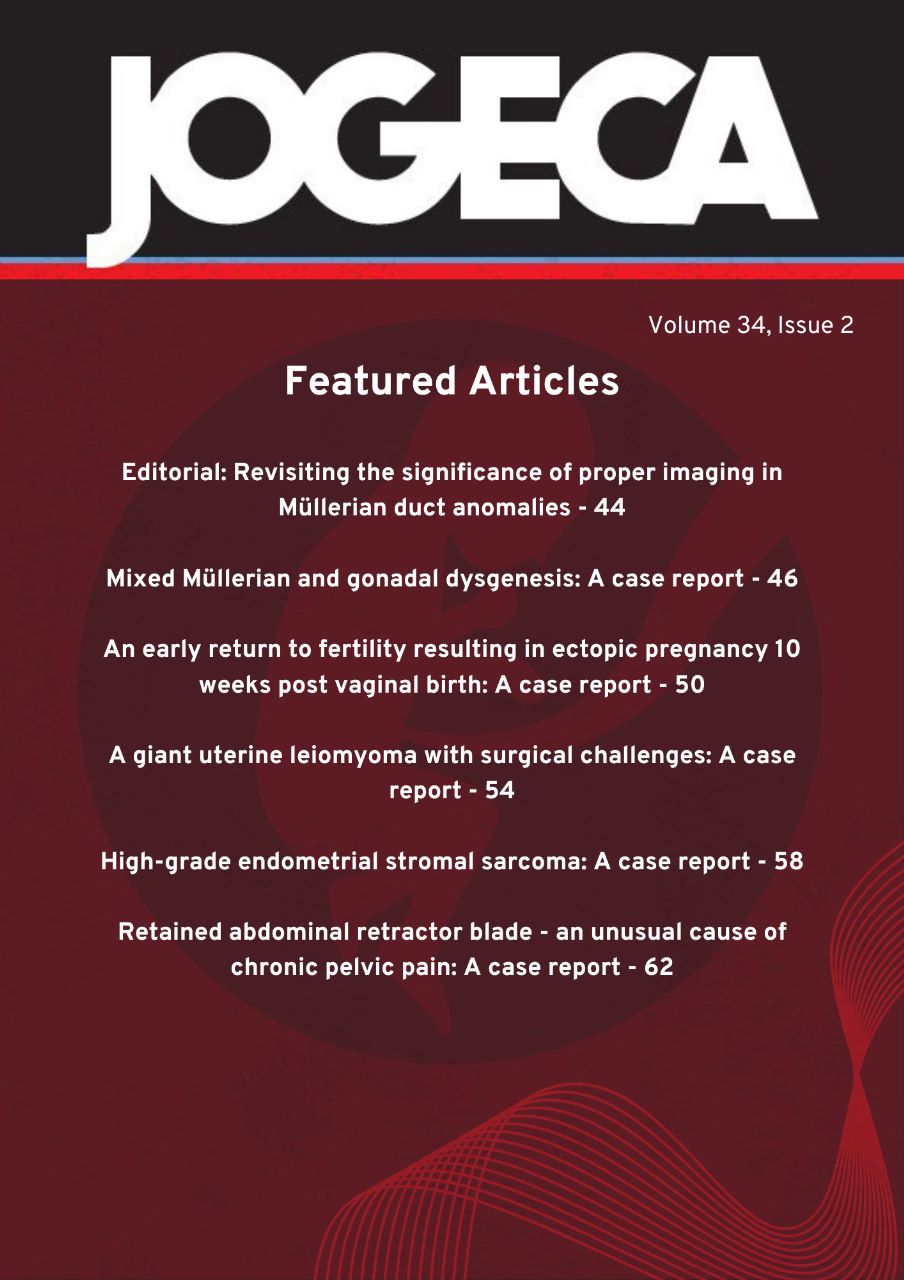A A missed mummified twin abdominal pregnancy: A case report
DOI:
https://doi.org/10.59692/jogeca.v36i1.152Abstract
Background: Abdominal pregnancies are rare pathologic ectopic pregnancies that occur in 1:10,000-30,000 pregnancies. Implantation sites include the pelvic and abdominal peritoneum, uterine surface, omentum, and abdominal organs, including the intestine, liver, spleen, diaphragm, and large blood vessels. They are frequently missed antenatally, especially because there are no specific clinical signs and symptoms for abdominal pregnancy making diagnosis difficult. Diagnosis is often made during cesarean delivery. Ultrasonography modalities have high diagnostic errors between 50 and 90%.
Case presentation: A 41-year-old presented with copious purulent vaginal discharge that was mixed with blood and was foul-smelling for two months as a referral to the Kenyatta National Hospital. Abdominopelvic computed tomography revealed a heterogeneous lesion in the left hemi abdomen. Her last menstrual period was December 2022 with DMPA in the same month. Her PDT was negative. She was sick-looking and had a purulent vaginal discharge. Intraoperatively, 500 mls of serous fluid was observed, and abdominal pregnancy, approximately 24–28 weeks of gestation with mummified skull bone, brain tissue, ribs, and long bones of the lower and upper limbs in their multiples suggestive of twin gestation. The patient’s postoperative period was uneventful, and she was later discharged in good condition.
Conclusion: Proper and timely diagnosis of abdominal pregnancy is required to improve outcomes, especially maternal outcomes. In this case, the pregnancy was fatal to the fetus, although maternal mortality have been reported. The diagnosis may come as a surprise finding intraoperatively theatre-like in this case and in some cases postemergency cesarean delivery for failed labor induction. The diagnostic modality of choice is ultrasonography, although our patient had ultrasound and computed tomography but ended up with a misdiagnosis because of the complexity of the diagnosis of abdominal pregnancy.
Downloads
Published
How to Cite
Issue
Section
Categories
License
Copyright (c) 2024 The Authors.

This work is licensed under a Creative Commons Attribution 4.0 International License.




